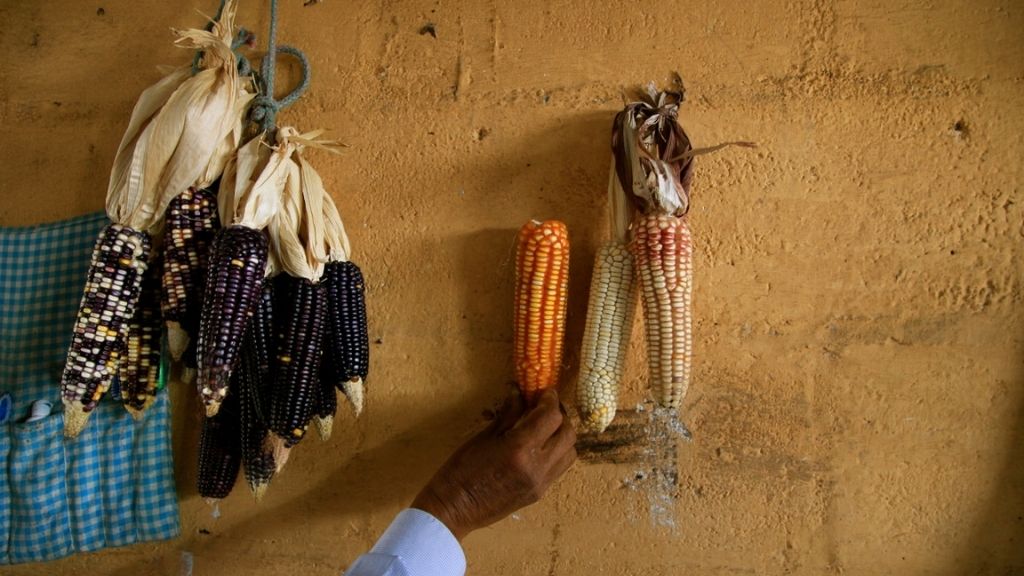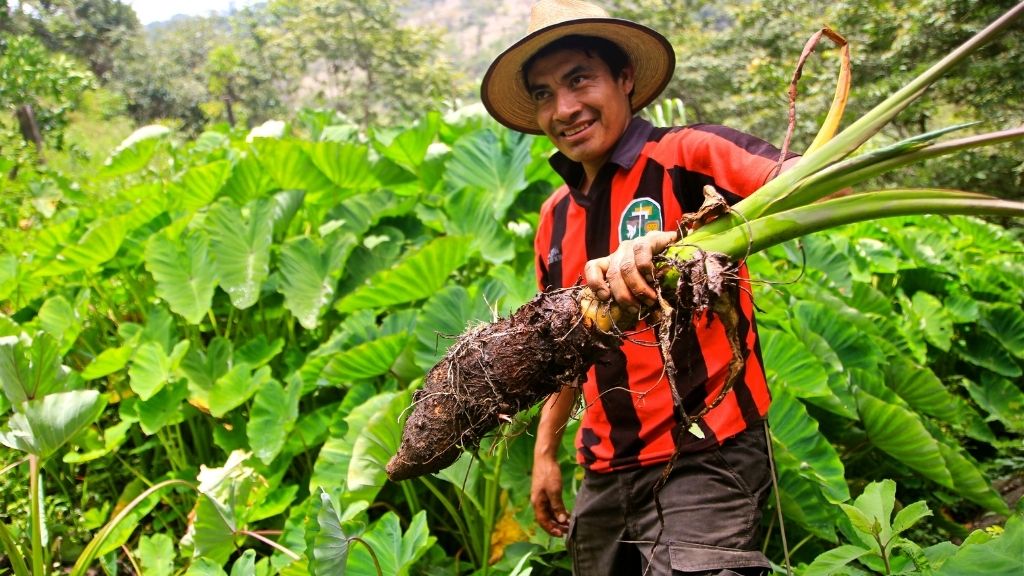What do we mean by Regenerative? Nathan Einbinder

Our Regenerative Food and Farming lead Dr Nathan Einbinder explores the meaning of the term regenerative, the possible pitfalls and missuses, and places where it has been helpful. He goes on to offer his own definition and to outline the transformative framework that needs to underpin it if we are to tackle environmental and social crises.
What I mean by regenerative…
Over the past century, numerous alternatives have been set out to counter the destructive impacts of the “modern” or “industrial” food system. These include organic and sustainable agriculture, biodynamic, permaculture, natural farming, agroecology, and regenerative, among others. Behind these concepts exist an array of beliefs and ideals, charismatic leaders and gurus, hopeful practitioners, along with debates over how each practice should be defined, implemented, and brought to scale.
Until recently, sustainable was the universal term for agriculture that maintained, and in some cases enhanced, local ecology and communities, while providing a growing population with adequate food. However, it is quickly becoming evident that sustaining a broken system is no longer a viable option. In many locations, the UK included, regenerative is slowly taking its place, as a framework and set of principles to tackle the present context of multiple global crises. At Schumacher College, we too have utilized the term, to describe the kind of agriculture and food systems we hope to teach, promote, and practice in our own growing spaces across the Dartington estate.
But what exactly does regenerative agriculture mean?
Delving into this question, one quickly realizes there is no easy answer. Since Robert Rodale of the Rodale Institute popularized the term in the 1980s, as a production system that goes “beyond organic,” by emphasizing connections between the soil, plants, and society, it has taken on many iterations. These include a set of techniques (minimal tillage, cover cropping, and mob grazing, to name a few) meant to “draw-down” carbon from the air into the ground; to broader principles that intend to harmonize agriculture with nature, with a goal to regenerate damaged rural environments and human health.
Exact definitions aside, I see two main features of regenerative agriculture that most should agree upon. First is the idea that cultivating plants and animals for food does not have to be synonymous to harming the planet. In fact, if done correctly, it can help restore the land – as well as economies and local communities – even with a growing population. The second tenet involves a renewed and serious focus on the value of soil, and soil health, which I’ll be teaching on a short course early next year. Regenerative agriculture, for many, is about bringing soils back to life. It introduces activities – or maintains ancestral practices – that enhance the biodiversity and complexity below ground, which in turn sustains healthy plants and human beings, along with non-human life, watersheds, the atmosphere, and oceans.

Technological fix or holistic approach?
The climate crisis, combined with the global pandemic, has brought our unsustainable food production and system to a head, forcing us to move from decades of contemplation into action. As regenerative agriculture takes centre stage there is growing optimism, yet also concern, over its potential simplification into a set of prescriptive practices: so-called technological fixes that do little to address underlying structures of inequality and socio-ecological harm, effectively keeping “business as usual.”
One example of this may be found on large corporate farms in the American Midwest. Continuing to produce in monoculture, for animal feedlots or cheap corn to dump on the international market, these production sites may now be deemed “regenerative” due to a few changes applied at the farm level that increase carbon storage. Certainly, it is encouraging that farmers make this first step, and it will be interesting to see how much carbon might be sequestered. And of course it is inspiring to hear how farmers might reduce their dependency on external inputs by natural means. However, to use these initial steps as an end-all – and even more concerning, as a band-aid solution to our unsustainable habits – must be differentiated from what is truly regenerative for soils and agroecosystems, as well as communities, farmers, and consumers.
I have seen other related examples of oversimplifying regenerative approaches in Central America, where Indigenous family farmers involved in government or international aid programs are “taught” regenerative practices to assist in climate change adaptation and improve food security. Again, this is not inherently bad, and indeed some positive benefits do transpire. However, by ignoring the overall structural issues – centuries of marginalization, paternalism and racism, the loss of Indigenous knowledge, and a history of gifting agrochemicals – the newly introduced techniques lead to superficial results.
From my perspective, the practices that encompass regenerative agriculture cannot be separated from the greater context in which food and farming rests. This must include the lived realities of farmers: their cultures and worldviews, struggles and economic viability, as well as the need to regenerate a clearly broken and unequal system.
My vision of regenerative food and farming reflects this holistic approach. Yes, we believe that soil health provides a worthy foundation. The re-valuing of soil, not just as a resource to be exploited, but as life giving, is a revolutionary concept that may have all kinds of unintended spinoffs, from restoring our immune systems to reconnecting humans with nature. In this sense, we might envision soil and its health as an entry point to a more abundant and egalitarian agriculture and food system.
Another critical aspect to our vision of regenerative food and farming is decolonization. According to Wageningen Professor Jessica Duncan in her new edited book, a regenerative food system must first “acknowledge and include diverse forms of knowing and being.” I could not agree more. I have witnessed firsthand the damage incurred by centuries of domination by Western ideals of progress, and entire knowledge systems. Ancestral practices and values, long overlooked, offer invaluable clues into regenerative food production, sustainable livelihoods and land stewardship. It is ingenuine to claim that we in the Global North have suddenly discovered that soil health and diversity is valuable, along with the management tools to restore damaged agroecosystems. It is time to form new narratives, while recognizing the unequal structures of power that have dominated worldviews and political economic decisions for centuries.
Decolonizing knowledge and practice is also important in terms of holistic teaching and learning processes. To revolutionize practices towards regenerative, we first need to change the way knowledge is valued and transmitted. As often critiqued in agroecology, the dominant top-down and expert-led “prescriptive” methods of the industrial system demand reform. Teaching regenerative practices – which by no means should be universal, rather context-dependent – must reflect the knowledge, capacities, and microhabitats of each farm and farmer. While external ideas and techniques are important, empowering farmers to experiment, learn from each other’s experiences, and connect on deeper levels with their lands, must be an essential component to the regenerative process.

Regenerative food and farming as transformative
Our belief that food and farming systems need transformation provides the overarching framework for our vision of what regenerative should look like. The systems are broken – or in the very least dysfunctional and rooted in inequality. Regenerative approaches should at once acknowledge this and offer tools for deep transformative change.
Contemplating this further, I recall a conversation I once had with a dear friend and family farmer named Alfredo Cortez. Explaining his community development work in Guatemala, which includes teaching ancestral and introduced techniques for increasing the resilience of local agroecosystems, he claimed that the practices, while important, were secondary. “Agroecology,” he told me, “is first about changing people’s minds. It’s about a change in attitude.”
Despite the difference in terminology, Alfredo’s statement resonates perfectly to what we are getting at here. While the techniques that encompass regenerative agriculture are essential as a footing, there are greater issues at stake – beliefs, values, and paradigms – that require an initial shift.
A regenerative approach should call for deeper introspection into all aspects of the broken system and its restoration. As mentioned earlier, this must include finding solutions – or at the very least recognizing – the tragic economic unviability of small to mid-scale farming, which, as many agree, is the backbone of biodiverse and nature-friendly agriculture, and vibrant rural communities.
In fact, I believe regenerative thinking should encompass all the necessary changes that accompany transformation at the field level and beyond. I’m talking about diet changes and relationships to food in general, new enterprises and collaborations that bring regeneratively grown produce, grains, dairy and meat from farm to plate, as well as new policies that support these innovations and family farmers.
It is precisely within this transformative thinking that our regenerative food and farming programmes have been designed and carried out. For certain, there is serious consideration for learning and studying practices, and the science behind them. This, alongside soil health, is the foundation. Yet the grander focus is to understand how these practices and their impacts fit within local contexts and the greater socio-ecological system, and its continuous improvement. This means exploring new ways to innovate, but also incorporating the diverse voices, knowledges, values – and crops – that have long been neglected and marginalized by industrial agriculture.
Our setting amongst farms, farmers, and enterprises that live and strive for the regenerative principles mentioned here allows us to move our learning and teaching processes beyond theory and into practice. Our classroom is a living laboratory of initiatives, histories, and opportunities for building something unique and critical. It is ultimately through these farmers and innovators – learning their struggles, successes, and dreams – that we will better understand what regenerative means, and needs to be.
Dr Nathan Einbinder is Programme Lead for Regenerative Farming at Dartington Trust. Find out more about our courses via the links below.
Study Regenerative Farming and Horticulture at Dartington
